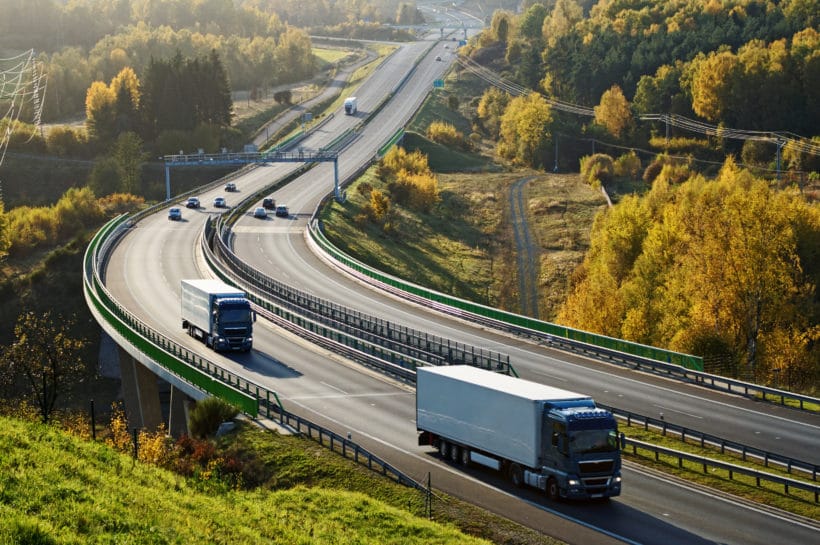
How MiX Telematics is keeping drivers safer with connected data
At MiX Telematics, asset management does not just mean helping companies track their vehicles and monitor their fuel consumption. It also means using data from connected vehicles to keep drivers safe, to route alarms to the transporter’s control room in just thirteen seconds, and to dispatch ambulances or roadside assistance to injured or stranded customers in a matter of minutes. We spoke to Rubeena Moosa, the Software Development and Applications Manager heading up a team of 10 Trailblazers, about how they make operations run seamlessly behind the scenes.

Tell us more about your role at MiX Telematics
I manage applications design and development, high-level architecture and solutions. I have a small but powerful team who’ve all been at the company for more than seven years—we’re like a family at this point! We are very passionate about our work and MiX Telematics has given us the opportunity and tools to design, build, and create excellent solutions. It’s very exciting, and by combining technical expertise with a thorough understanding of our business strategy we’re able to design solutions to help the company achieve its business goals.
What kind of customer experience does MiX Telematics aspire to provide?
MiX Telematics solutions are delivered as SaaS to three-quarters of a million subscribers spanning more than 120 countries across the globe. Insurance providers often require their policy holders to subscribe to a tracking and recovery service, which gives us even more reason to give them a valuable experience to prove it’s worth having.
Our main goal is to be there when our customers need us, and do it as quickly as possible. That could be when a driver hits their panic button in the event of a hijacking, if they’ve broken down at the side of the road and need assistance, or if they’ve told us their car was parked at the mall and we notice it’s actually heading off down the highway! To respond quickly to customers depends on working closely with a network of partners, such as emergency and recovery services. If a customer’s alarm goes off, we aim to have it routed to our control room for action in less than thirteen seconds.

What were the challenges you faced around data management and integration?
We’re a leading technology company and we use the best software available. All those tools need to integrate seamlessly to give us a single source of data and greater efficiency across the business.
We knew we needed a new solution during a period of rapid growth. We wanted to launch a new product, but vehicle tracking relies on being able to process a huge amount of data, such as automatic vehicle location (AVL) data and impact data. Our legacy Enterprise Service Bus system was struggling to process 300 messages per second, so we knew it wasn’t going to be able to handle the volumes needed to achieve our growth goals.
Following a proof of concept, we selected MuleSoft to streamline data and integrations across the business. A representative flew out from London to help us build our architecture from scratch to enable the solution to scale in line with the business requirements. It’s a good thing they did because today, via our integration with Apache Kafka, we’re processing 4,000 messages per second, which is 18.6 billion a year.
How do smarter integrations help streamline the day-to-day running of the business?
With MuleSoft integrating our core systems together with vehicle data, we have a 360-degree visibility of the customer. When we collect device data, we already know who the customer is, which services they pay for, and whether they’re up-to-date with payments. If they’re consistently failing to pay, we can suspend their services.
We can also work more closely with our partners. For example, we share information with insurance companies via APIs rather than custom integrations, and in return they pass us leads. All these seamless integrations impact efficiency across the whole organisation, and we can even onboard new customers – including getting confirmation from their bank – in 7 to10 minutes.
How are you using machine learning and AI?
Once we built our architecture, it was easy to start collecting large volumes of data. After two years, we had enough data in the system to start using machine learning to help identify false positive alarms – so we don’t flood the customer with messages for no reason. We also use AI for heatmaps for a graphical representation of the data and trend analysis.

What are the biggest benefits of MuleSoft for you and your company?
There’s a lot to love about MuleSoft and my experience has been wonderful. It’s much easier to maintain than our previous system, which has saved the company around $1 million USD already.
It’s easy to use, which means I can easily upskill my current developers without having to hire people with specialist skills, and it’s allowed us to drastically shorten our delivery times.
Seven years ago we did two big deployments a year, but today we can deploy up to three releases a week, so we’re helping the business to be much more agile and to continuously adapt and evolve to meet changing customer and employee expectations. We’ve also had great support, not just from the MuleSoft team but from the wider community of real users across the world.